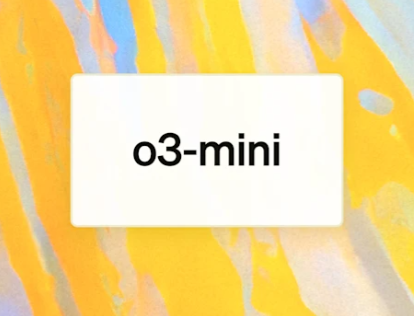OpenAI has officially rolled out o3 Mini, a new AI model now accessible to both free and pro users. The release follows a period of intense competition in the AI space, particularly after DeepSeek’s unexpected rise to prominence. While DeepSeek introduced reasoning transparency and an improved coding experience, it has faced ongoing server stability issues, that OpenAI seems to have just filled.
OpenAI’s Strategic Move to Maintain Leadership
The launch of o3 Mini appears to be a direct response to the shockwaves caused by DeepSeek’s unveiling. OpenAI has now introduced a similar reasoning feature in o3 Mini, available via the “Reason” button. While the feature is accessible to free-tier users, pro users receive increased usage limits and improved processing speed. However, the rollout does not include visual input processing capabilities, meaning that o3 Mini remains strictly text-based for now.
A Coding-Focused Model
OpenAI emphasized that o3 is optimized for coding and its enhanced ability to write, debug, and explain complex code, positions the model as a powerful tool for developers. Compared to earlier versions, o3 Mini is expected to perform significantly better in:
- Code generation with improved efficiency and structure.
- Debugging assistance, where it can analyze errors and suggest fixes.
- Step-by-step programming explanations, making it ideal for both professionals and learners.
This aligns closely with DeepSeek’s focus on technical accuracy and transparency, reinforcing the trend of AI models becoming more developer-friendly rather than purely conversational.
Testing o3 Mini’s Strengths
Given its emphasis on reasoning, creativity, and code, users can experiment with various prompts to assess how o3 Mini compares to its competitors. Here are a few test cases:
1. Creativity & Meaningful Transformation
Prompt: “Take this article about climate change and rewrite it as a motivational speech for a startup founder.”
This tests whether the model can reshape information while maintaining its core message.
2. Understanding Nuance in Tone & Humor
Prompt: “Explain the stock market like a pirate telling a story about buried treasure.”
A strong LLM should be able to blend humor with accurate financial concepts.
3. Originality & Innovation
Prompt: “Invent a new AI-powered mobile app for students that solves an everyday problem.”
A good model will generate novel and realistic ideas rather than regurgitate existing concepts.
4. Building Graphics with Code (UI/UX Understanding)
Prompt:
“Write a Python script using Matplotlib to create an interactive dashboard that visualizes user engagement on a website.”
This tests the model’s knowledge of data visualization, user interface design, and modern coding standards.
5. Simplifying Complex Concepts
Prompt: “Explain Turing Tests in simple terms to a 10-year-old using a LEGO analogy.”
A strong AI should be able to adjust complexity based on the target audience.













